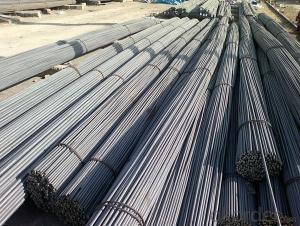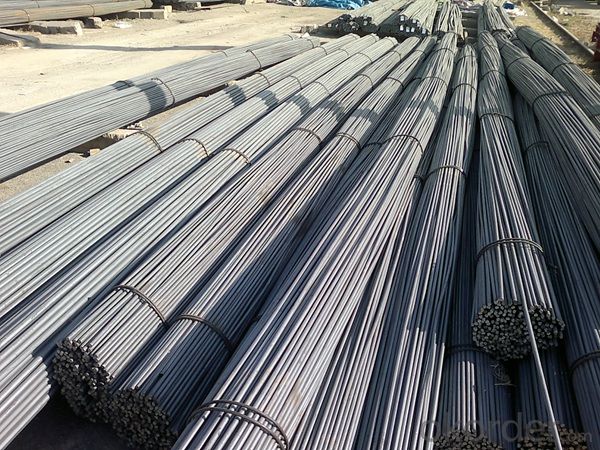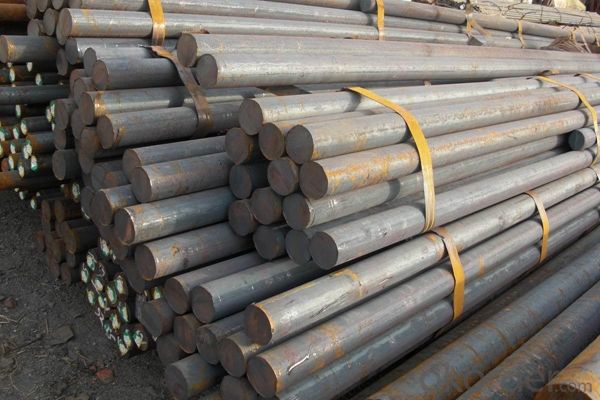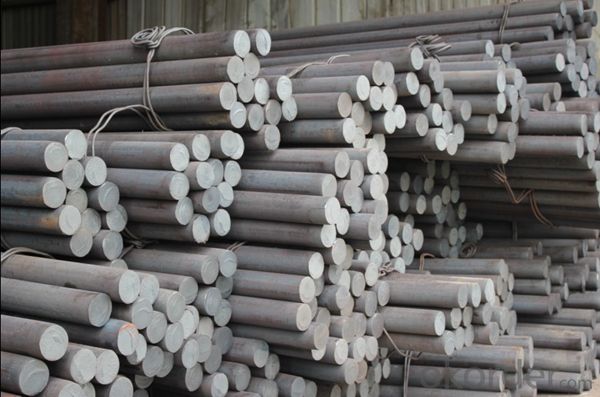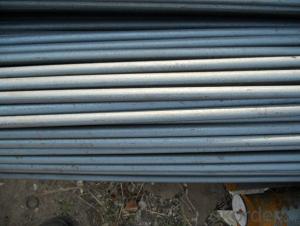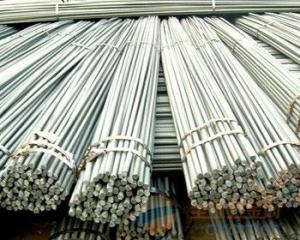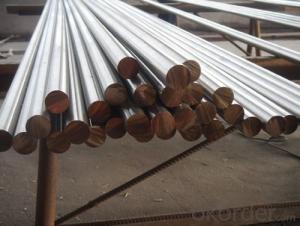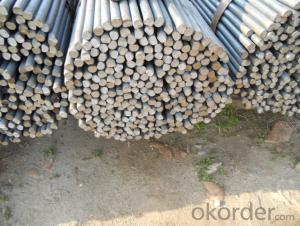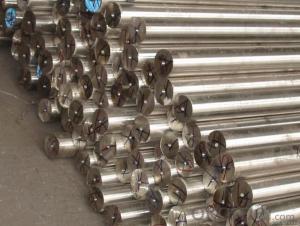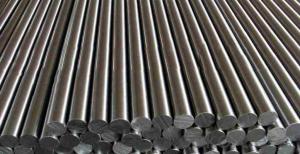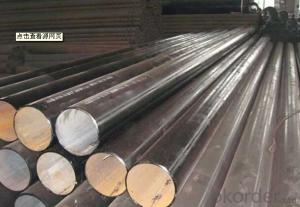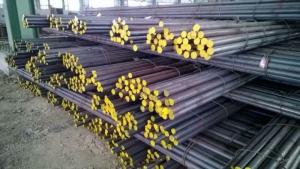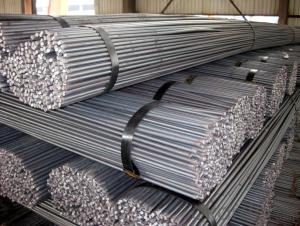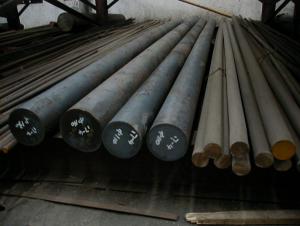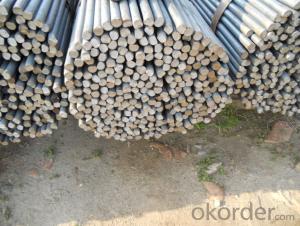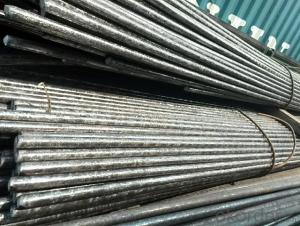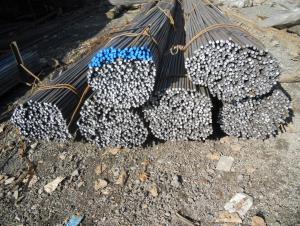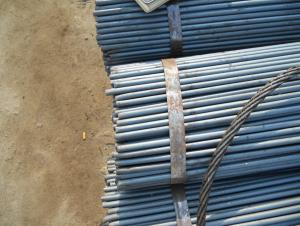Hot Rolled Steel Round Bar for Structure Using
- Loading Port:
- Tianjin
- Payment Terms:
- TT or LC
- Min Order Qty:
- 25 m.t.
- Supply Capability:
- 200000 m.t./month
OKorder Service Pledge
OKorder Financial Service
You Might Also Like
Product Description:
OKorder is offering Hot Rolled Steel Round Bar for Structure Using at great prices with worldwide shipping. Our supplier is a world-class manufacturer of steel, with our products utilized the world over. OKorder annually supplies products to European, North American and Asian markets. We provide quotations within 24 hours of receiving an inquiry and guarantee competitive prices.
Product Applications:
Hot Rolled Steel Round Bar for Structure Using are ideal for structural applications and are widely used in the construction of buildings and bridges, and the manufacturing, petrochemical, and transportation industries. Carbon steel round bar is the most common form of steel because its price is relatively low while it provides material properties that are acceptable for many applications, more so than iron. It is often used when large quantities of steel are needed, for example as structural steel. The density of this product is approximately 7.85g/cm³ and the young's modulus, like all steels.
Product Advantages:
OKorder's Steel I-Beams are durable, strong, and resist corrosion.
Main Product Features:
· Premium quality
· Prompt delivery & seaworthy packing (30 days after receiving deposit)
· Corrosion resistance
· Can be recycled and reused
· Mill test certification
· Professional Service
· Competitive pricing
Specifications of Hot Rolled Steel Round Bar for Structure Using
1. Grade: Q235, SS400, S235JR, A36
2. Sizes: Diameter: 6mm-150mm; Length: 6m, 9m, 12m or as customer’s request
3. Type: Mild steel; Low carbon steel
4. Shape: Round bar, solid bar of steel with circular section
5. Technique: Hot rolled or cold drawn
6. Mass: Mass(kg/m) = Diameter(mm)×Diameter(mm)×0.00617
Steel Type | Maximum forging temperature (°F / °C) | Burning temperature (°F / °C) |
1.5% carbon | 1920 / 1049 | 2080 / 1138 |
1.1% carbon | 1980 / 1082 | 2140 / 1171 |
0.9% carbon | 2050 / 1121 | 2230 / 1221 |
0.5% carbon | 2280 / 1249 | 2460 / 1349 |
0.2% carbon | 2410 / 1321 | 2680 / 1471 |
3.0% nickel steel | 2280 / 1249 | 2500 / 1371 |
3.0% nickel–chromium steel | 2280 / 1249 | 2500 / 1371 |
5.0% nickel (case-hardening) steel | 2320 / 1271 | 2640 / 1449 |
Packaging & Delivery of Hot Rolled Steel Round Bar for Structure Using
Packaging Detail: All goods are packed in bundle with steel strips and shipped by break bulk vessel or container (depend on target market and different ports)
Delivery Detail: 45 days
Trade terms: FOB, CFR, CIF
MOQ: 25 tons per specification; we can negotiate the quantity if the specification is normal or we have stock of one specification.
Weight: The price invoicing on theoretical weight basis or actual weight basis depends on customer’s request.
Shipment: The shipment of bulk break or container is depends on customer’s request and the situation of the port of destination.
Documents given: Full set of original clean on board bill of lading; Original signed commercial invoice; Original packing list; Policy of insurance; Certificate of origin and what the target market needs.
Production Flow of Carbon Steel Round Bar
1. The common processes are preheated forging quenching, dual refinement solution process, cooling quenching and isothermal quenching. We use heat treatment for dual refinement solution process. The main measures process is high temperature solution and refinement cycle. High temperature solution can improve the carbide morphology and particle size. The aim is to make the loop refinement ultrafine austenite grains.
2. EAF+LF+VD+ Forged+ Heat Treatment
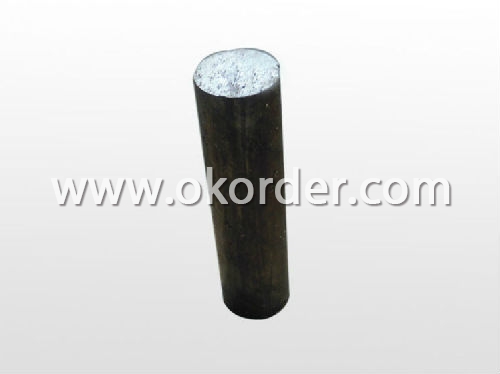
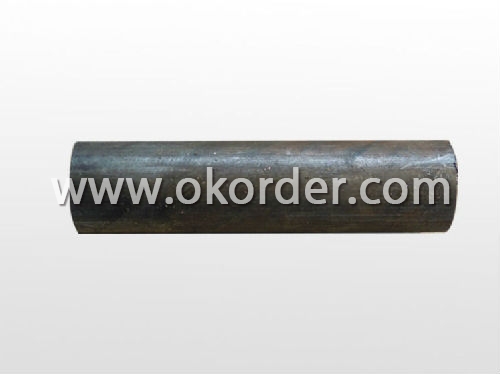
FAQ:
Q1: Can fit in the containers of 20fts the steel beams of 6M?
A1: No proble, we can put them into the containers in the form sideling.
Q2: What is the normal tolerance of Hot Rolled Mild Steel Angle Beams for Structures and for Buildings?
A2: Normally 3%-5%, but we can also produce the goods according to the customers' requests.
Q3: The products are invoicing on theoritical weight or on actual weight?
A3: We can do it in both manners, according to the customers' request.
- Q: Can steel round bars be used in the electronics industry?
- Yes, steel round bars can be used in the electronics industry. They are commonly used for various applications such as providing structural support, heat dissipation, and grounding in electronic devices and equipment. Additionally, steel round bars offer excellent strength, durability, and conductivity, making them suitable for use in the electronics industry.
- Q: Lightning protection earthing zinc plating flat iron and round steel welding method, need to flat iron wrapped in round steel outside welding?
- The flat steel is not required to be wrapped outside the round bar, and the round steel can be directly welded on the flat steel, and the welding joint area can not be smaller than round steel or flat steel, and the section is a cross section
- Q: What is the difference between a bright and a cold finished steel round bar?
- A bright steel round bar and a cold finished steel round bar are two distinct types of steel bars that differ in their manufacturing processes and resulting characteristics. A bright steel round bar, also known as a turned or polished bar, undergoes a process called turning or polishing. During this process, the rough steel bar is rotated on a lathe machine and a cutting tool is applied to remove the outer layer of the bar, resulting in a smooth and shiny surface. This process not only enhances the appearance of the bar but also improves its dimensional accuracy and surface finish. Bright steel round bars are commonly used in applications where aesthetics and a high-quality surface finish are important, such as architectural components, decorative items, and certain automotive parts. On the other hand, a cold finished steel round bar undergoes a different manufacturing process called cold drawing or cold rolling. In this process, the hot-rolled steel bar is passed through a series of dies at room temperature, reducing its diameter and increasing its length. This cold working process gives the steel bar improved mechanical properties, such as increased tensile strength, improved yield strength, and enhanced dimensional accuracy. Cold finished steel round bars are often used in applications that require high strength and precision, such as shafts, gears, bolts, and tools. In summary, the main difference between a bright steel round bar and a cold finished steel round bar lies in their manufacturing processes and resulting characteristics. While a bright steel round bar is turned or polished to achieve a smooth and shiny surface, a cold finished steel round bar undergoes cold drawing or rolling to enhance its mechanical properties and dimensional accuracy. The choice between these two types of steel bars depends on the specific requirements of the application, such as the need for aesthetics, surface finish, strength, or precision.
- Q: How do you prevent rust on steel round bars?
- To prevent rust on steel round bars, there are several effective methods you can employ: 1. Apply a protective coating: One of the most common ways to prevent rust is by applying a protective coating such as paint, varnish, or enamel. These coatings act as a barrier, preventing moisture and oxygen from reaching the steel surface and causing rust. 2. Galvanization: Galvanizing steel round bars involves coating them with a layer of zinc. This process creates a protective barrier, as the zinc acts as a sacrificial anode, corroding instead of the steel. Galvanized steel is highly resistant to rust and is commonly used in outdoor applications. 3. Powder coating: Powder coating is another effective method of preventing rust on steel round bars. In this process, a dry powder is electrostatically applied to the steel surface, which is then cured under heat. The resulting coating provides excellent protection against rust and corrosion. 4. Regular cleaning and maintenance: Regularly cleaning your steel round bars and removing any dirt, moisture, or other corrosive substances can help prevent rust. Additionally, applying a rust inhibitor or lubricant can further protect the steel from corrosion. 5. Proper storage: Storing steel round bars in a dry and well-ventilated area can significantly reduce the risk of rust. Avoid storing them directly on the ground or in areas prone to moisture. Using pallets or racks to keep the steel elevated and properly spaced can also help prevent rust formation. 6. Avoid exposure to harsh environments: Exposing steel round bars to harsh environments, such as saltwater or acidic chemicals, significantly increases the risk of rust. If possible, try to protect the steel from prolonged exposure to these substances or consider using a more corrosion-resistant material in such conditions. By implementing these preventive measures, you can effectively reduce the likelihood of rust formation on steel round bars, ensuring their longevity and maintaining their structural integrity.
- Q: How do you calculate the strength of a steel round bar?
- When calculating the strength of a steel round bar, several factors come into play. The primary consideration is the yield strength of the material, which signifies the stress level at which the steel permanently deforms. This value is typically provided by the manufacturer or can be found in engineering handbooks. The next step involves determining the cross-sectional area of the round bar. This can be achieved by measuring the bar's diameter and utilizing it to calculate the area using the formula A = πr^2, where A represents the cross-sectional area and r denotes the radius. Once the cross-sectional area is established, it becomes possible to calculate the ultimate tensile strength (UTS) using the formula UTS = Yield Strength / Safety Factor. The safety factor is a numerical value that takes into account uncertainties and potential variations in the material's strength. It is usually specified by design requirements or industry standards. Lastly, the maximum load that the steel round bar can endure before failing can be determined by multiplying the ultimate tensile strength by the cross-sectional area. This value represents the bar's strength and can be utilized to evaluate its suitability for a specific application. It is worth noting that other factors, such as the bar's length, shape, and any additional treatments or modifications, can also impact its strength. Therefore, it is recommended to consult with a structural engineer or refer to relevant design codes and standards to ensure accurate calculations and safe application of steel round bars.
- Q: Can steel round bars be used in the manufacturing of consumer goods?
- Consumer goods manufacturing can make use of steel round bars. Steel is a durable and versatile material that finds wide application across industries, including the production of consumer goods. Steel round bars can be molded, cut, and shaped into various components or parts that are required for items like furniture, appliances, tools, and machinery. The strength and resilience of steel make it a perfect choice for consumer goods that demand robust and long-lasting materials. Moreover, steel can be easily customized and finished with coatings or treatments to enhance its appearance or protect it from corrosion, thereby making it even more suitable for use in consumer goods. In summary, the usage of steel round bars is common in consumer goods manufacturing due to their dependable nature, versatility, and ability to provide the desired quality and functionality.
- Q: What are the different standards for steel round bars?
- Steel round bars have different standards depending on the country and industry. Various commonly used standards are as follows: 1. In the United States, ASTM A36 is widely used. It specifies the requirements for carbon structural steel, including round bars. The standard covers the steel's chemical composition, mechanical properties, and dimensional tolerances. 2. Many European countries use EN 10025, a European standard that encompasses structural steel, including round bars. It defines the steel's chemical composition, mechanical properties, and technical delivery conditions. 3. In Asia, JIS G3101 is commonly used. This Japanese standard specifies the general requirements for hot-rolled steel, including round bars. It covers the steel's chemical composition, mechanical properties, and dimensional tolerances. 4. Germany and other European countries commonly employ DIN 17100. This German standard defines general structural steels, including round bars, and provides detailed information on the steel's chemical composition, mechanical properties, and technical delivery conditions. 5. The British standard, BS 970, covers various types of steel, including round bars. It provides specifications for the steel's chemical composition, mechanical properties, and dimensional tolerances. These examples represent only a fraction of the numerous standards for steel round bars. To ensure the desired properties and quality of the steel, it is crucial to consult the appropriate standard for specific applications.
- Q: How do I calculate the length of a steel round bar based on weight?
- To calculate the length of a steel round bar based on weight, you would need to know the density of the steel and its cross-sectional area. The formula to calculate the length is weight divided by (density multiplied by cross-sectional area).
- Q: How do you check the quality of a steel round bar?
- To check the quality of a steel round bar, several factors need to be considered. Firstly, it is important to assess the bar's dimensions. This involves measuring its diameter, length, and straightness. Any deviation from the specified dimensions could indicate a lower quality bar. Next, the surface condition of the steel round bar should be inspected. It should be free from any visible defects, such as cracks, pits, or surface irregularities. Additionally, the bar's surface should be smooth and devoid of any significant roughness or burrs. Furthermore, the chemical composition of the steel round bar must be examined. This can be determined through spectroscopic analysis or other testing methods. The composition should meet the required standards and specifications, as any deviations can affect the bar's strength and durability. Another crucial aspect to consider is the mechanical properties of the steel round bar. This involves testing its tensile strength, yield strength, and elongation. These tests can be conducted using specialized machines to ensure that the bar meets the necessary strength requirements. Additionally, the steel round bar can be subjected to non-destructive testing methods, such as ultrasonic testing or magnetic particle inspection. These techniques help identify any internal or surface defects that may impact the bar's quality. Furthermore, it is essential to verify the bar's compliance with industry standards and certifications. This includes checking if the steel round bar meets the specifications set by organizations such as ASTM International or ISO. Lastly, it is advisable to consult with reputable suppliers or manufacturers who have a proven track record in producing high-quality steel round bars. They can provide documentation, certifications, and test reports to validate the quality of their products. In summary, evaluating the dimensions, surface condition, chemical composition, mechanical properties, compliance with standards, and supplier's reputation are key steps to check the quality of a steel round bar. By thoroughly examining these factors, one can ensure the reliability and performance of the steel round bar for their intended applications.
- Q: What are the different types of steel round bar alloys for improved strength?
- There are several types of steel round bar alloys that provide improved strength, including carbon steel, alloy steel, stainless steel, and tool steel. Each of these alloys has different properties and compositions, making them suitable for various applications where enhanced strength is required.
Send your message to us
Hot Rolled Steel Round Bar for Structure Using
- Loading Port:
- Tianjin
- Payment Terms:
- TT or LC
- Min Order Qty:
- 25 m.t.
- Supply Capability:
- 200000 m.t./month
OKorder Service Pledge
OKorder Financial Service
Similar products
Hot products
Hot Searches
Related keywords
